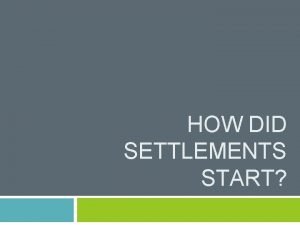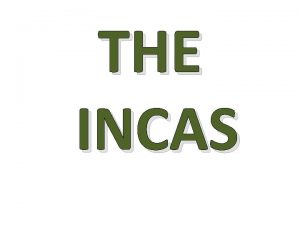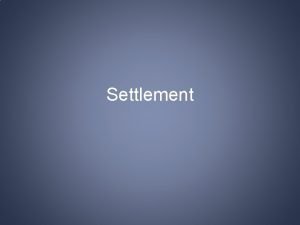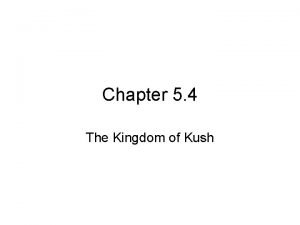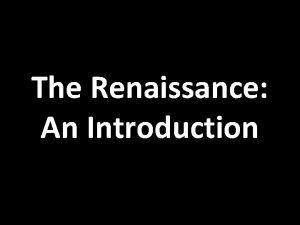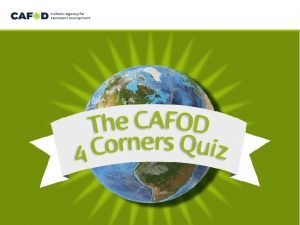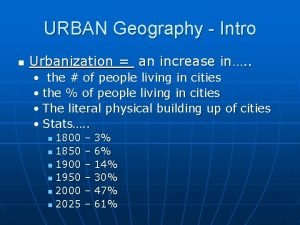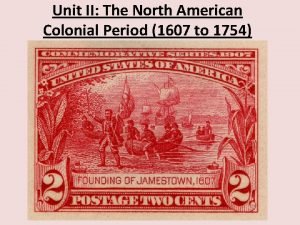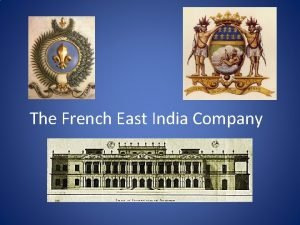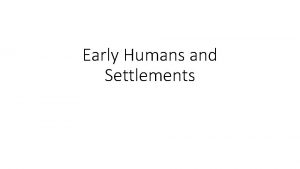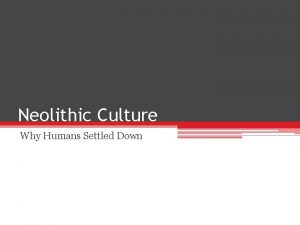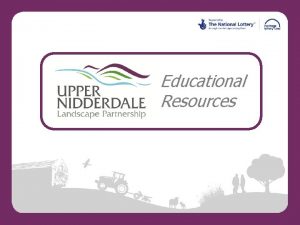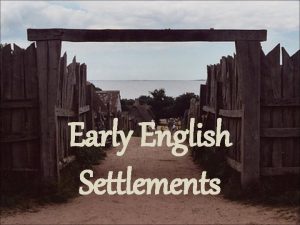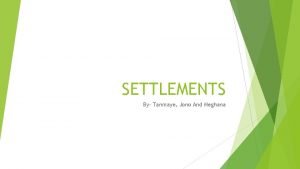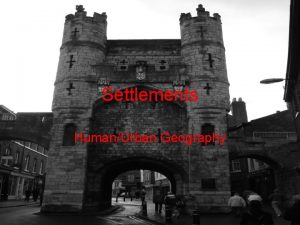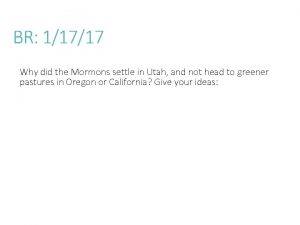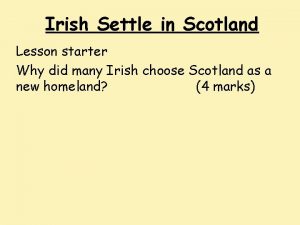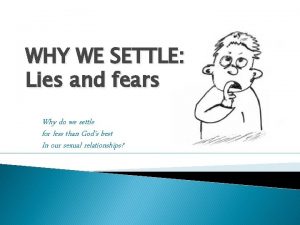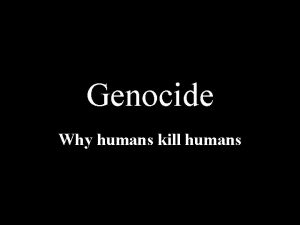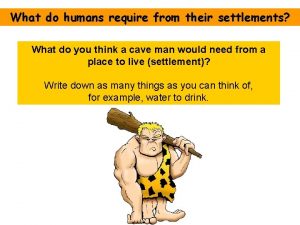HOW DID SETTLEMENTS START Why did humans settle

















- Slides: 17

HOW DID SETTLEMENTS START?

Why did humans settle down?

Learning Objectives To know and understand why humans began to settle in places (agriculture, religion, conflict etc) To know the difference between site and situation To understand how these influence settlements

What does ‘Settlement’ mean? On your own, list the words that you would include in the definition Now share your words in pairs Share as a table and write a definition as a table

Settlement A settlement is a place where groups of people live. Settlements can range from small hamlets and villages to huge cities such as London 50% of the world’s population now live in cities.

Site and situation A site is the actual place where a settlement developed. It describes the physical nature of where it is located. E. g. water supply, building materials, quality of soil, climate, shelter and defence The situation of a settlement is the description of the settlement in relation to surrounding features such as other settlements and physical features around it. The situation of a settlement is the most important in determining whether it grows to become

How can we describe settlements? • Site • Situation • Function • Shape • Population • Area

Settlement Sites C A B You are the chief of a small tribe who have migrated from your homelands in the south due to war. You have arrived in a new area but need to choose between sites A, B and C for your new settlement. Explain how you decided on your choice of site.

Reasons to choose a settlement site

Main types of site Dry point sites – built on higher, drier ground to avoid flooding from rivers Wet point sites – built by rivers or springs to improve access to water Defensive – built on a protective site e. g. steep sided hills, surrounded by water Bridging point i. e. to cross a river where it’s narrow enough Nodal point – centre of several communications

Settlement Sites Dry Point Sites Settlements that have been built upon higher land above the floodplain to protect them from flooding or upon “islands” of higher, drier ground in an otherwise marshy area. For example, Ely in Cambridgeshire. Wet Point Sites Settlements that have been built by rivers or at springs to improve their access to water. For example, Kingston-Upon-Thames in Surrey.

Defence Settlements that have been built on a site that protects them from surrounding tribes. Such sites may have been protected on three sides by water (eg Durham) or on a hill with steep sides and commanding views. Gordes, France

Communications Bridging Points These settlements are located by a bridge on a river. They might originally have been built by a ford in the river. For example, Bedford in Bedfordshire. Nodal Points These settlements are located where several valleys (natural routes) meet to give a route centre.

Resources Food supply Settlements that were located on suitable land for animal grazing and for growing crops. Fuel supply Settlements that were built by wooded areas or in later times on coalfields. Fuel was vital for both heating and cooking. Which factors of location are still applicable today in Less Economically Developed Countries (LEDCs)?

Aspect and Shelter Settlements that were built in sheltered areas such as valleys or in bays at coastal locations. Aspect (the direction in which a settlement faces) was also an important consideration. Settlements would be more ideally located on south-facing slopes in the Northern Hemisphere and on north-facing slopes in the Southern Hemisphere. For example, in Britain, it was an advantage to be sheltered from cold winds blowing from the North, and to be facing South which meant more sunlight. N S settlements on south-facing slopes receive more heat and sunlight Northern Hemisphere sun is in the South

N Match the description of the settlement sites to the locations A to E on the map. A Nodal point Bridging point B C Defensive site Wet point site Dry point site D E

N Match the description of the settlement sites to the locations A to E on the map. A Nodal point Dry point site C Nodal point B Bridging point Defensive site Wet point site Dry point site D Wet point site E Defensive site
 Marshy area
Marshy area Why did some ancient greek settlements trade?
Why did some ancient greek settlements trade? Why did mormons settle in utah
Why did mormons settle in utah Why did the puritans settle in new england
Why did the puritans settle in new england Andreas carlsson bye bye bye
Andreas carlsson bye bye bye Where did most of the irish immigrants settle
Where did most of the irish immigrants settle Manipulated variable definition
Manipulated variable definition Where did the inca first settle around 1400?
Where did the inca first settle around 1400? Where did the normans settle in ireland
Where did the normans settle in ireland Who invaded kush and destroyed meroe
Who invaded kush and destroyed meroe Why did the industrial revolution start in britain
Why did the industrial revolution start in britain Why did the renaissance start in italy
Why did the renaissance start in italy Why did europeans begin exploring?
Why did europeans begin exploring? Question 1
Question 1 Squatter settlements ap human geography
Squatter settlements ap human geography English settlements in america
English settlements in america French east india company country
French east india company country River rock funds
River rock funds
